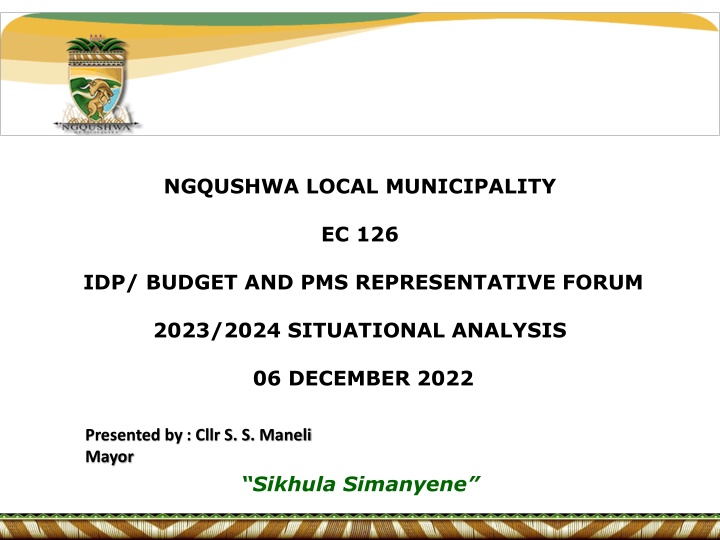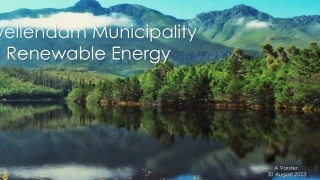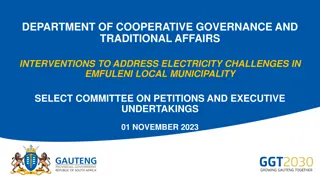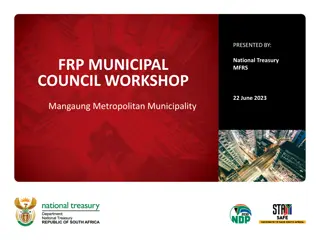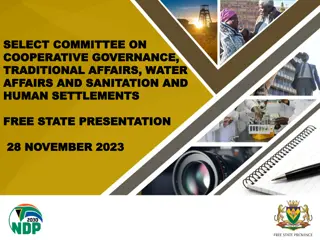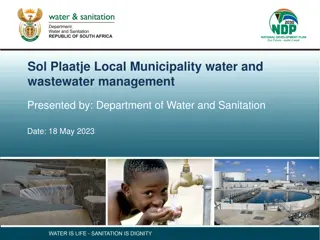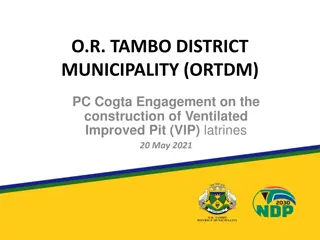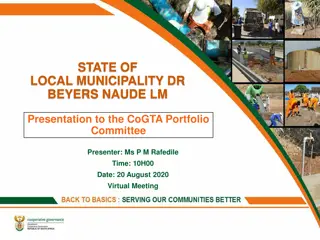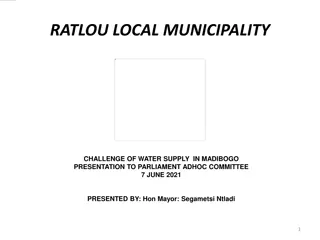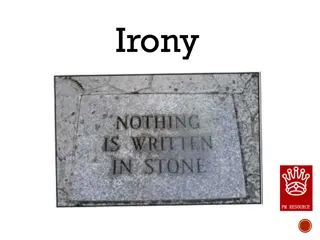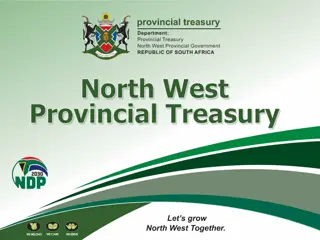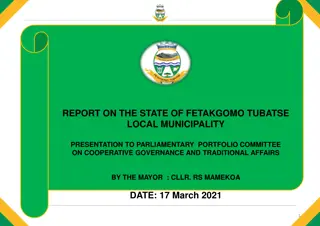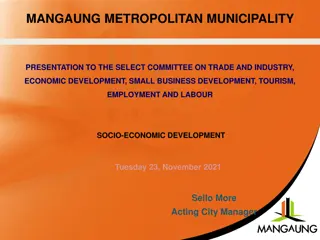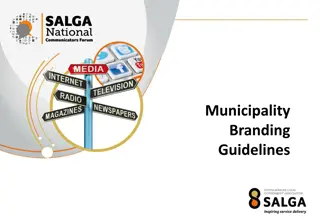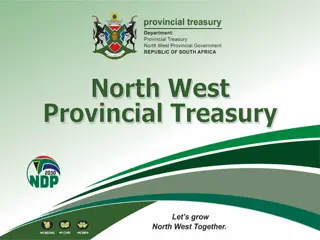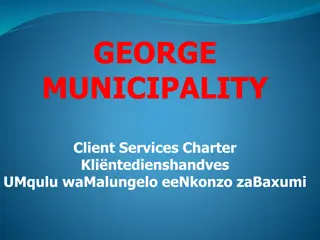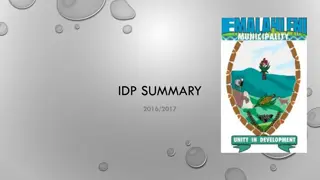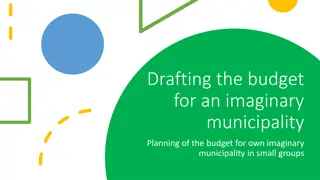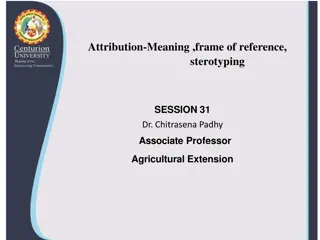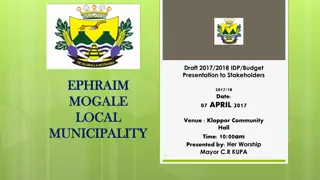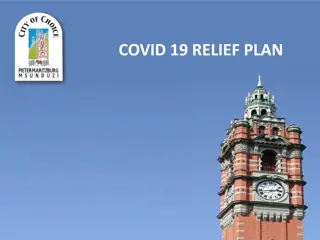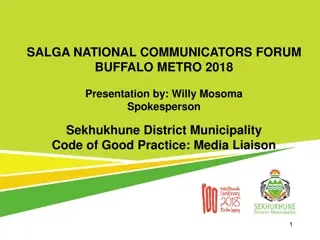Ngqushwa Local Municipality 2023/2024 Situational Analysis
Presentation of situational analysis for Ngqushwa Local Municipality focusing on trends, conditions, and challenges as per legislative requirements for IDP development. Includes background, purpose, and legislative context.
Download Presentation

Please find below an Image/Link to download the presentation.
The content on the website is provided AS IS for your information and personal use only. It may not be sold, licensed, or shared on other websites without obtaining consent from the author.If you encounter any issues during the download, it is possible that the publisher has removed the file from their server.
You are allowed to download the files provided on this website for personal or commercial use, subject to the condition that they are used lawfully. All files are the property of their respective owners.
The content on the website is provided AS IS for your information and personal use only. It may not be sold, licensed, or shared on other websites without obtaining consent from the author.
E N D
Presentation Transcript
NGQUSHWA LOCAL MUNICIPALITY EC 126 IDP/ BUDGET AND PMS REPRESENTATIVE FORUM 2023/2024 SITUATIONAL ANALYSIS 06 DECEMBER 2022 Presented by : Cllr S. S. Maneli Mayor Sikhula Simanyene
KPA 1 INSTITUTIONAL DEVELOPMENT AND ORGANISATIONAL DESIGN PRESENTATION OUTLINE BACKGROUND LEGISLATIVE CONTEXT GEOGRAPHIC PROFILE STATUS - KEY PERFORMANCE AREAS SWOT ANALYSIS AND CHALLENGES WARD PRIORITY NEEDS QUARTER 1 PERFORMANCE INFORMATION CONCLUSION 2
BACKGROUND The presentation provides a situation analysis of existing trends and conditions within Ngqushwa jurisdiction in accordance with the requirements of the Municipal Systems Act for developing or review of IDP. Ngqushwa Local Municipality relies on South African National Census data conducted by Stats SA on official population figures assisting in making informed decision relating to population challenges faced by the municipality .
WHY SITUATION ANALYSIS? The purpose of the situational analysis is to provide an overview of the existing situation by focusing on the relevant aspects of the situation which will enable the Council of the municipality to make appropriate decisions. Situation Analysis Phase, provides descriptive data across a range of socio economic indicators of Ngqushwa Local Municipality.
LEGISLATIVE CONTEXT THE REPUBLIC OF SOUTH AFRICA CONSTITUTION OF 1996 Provides the primary, overarching framework within which local government planning must be contextualized. The Constitutional mandate given to local government is to provide democratic and accountable government for all communities and ensure the provision of services to communities in a sustainable manner which promotes social and economic development, a safe and healthy environment thereby encouraging the involvement of communities and community organizations in the matters of local government. MSA 32 OF 2000 Section16 Encourage, and create conditions for, the local community to participate in the affairs of the municipality, including in the preparation, implementation and review of its integrated development plan in terms of Chapter 5. MSA 32 OF 2000 Section 25 An IDP adopted by a municipal council must: - Link, integrate and coordinate plans and take into account proposals for the development of the municipality. - Align the resources and capacity of the municipality with the implementation plan; - Form the policy framework and general basis on which annual budget must be based; - Complies with the provisions of the MSA, with the particular reference to Chapter 5;and - Be compatible with national and provincial plans and planning requirements binding on the municipality in terms of legislation MSA 32 OF 2000 Section 23 each municipal council must, within a prescribed period after the start of its elected term, adopt a single, inclusive and strategic plan for the development of the municipality. MFMA 56 of 2003 Section 21 (1) (a) The Mayor of a municipality must co-ordinate the processes for preparing the annual budget and reviewing the IDP and ensure that these are mutually consistent and credible. (b) The Mayor of a municipality must also at least 10 months before the start of the budget year, table in the municipal council a time schedule outlining key deadlines for the preparation, tabling and approval of the annual budget and IDP . MSA 32 OF 2000 Section 27 municipality through appropriate mechanisms ..involve the community in the development, implementation and review of the municipal PMS, and in particular, allow the community to participate in the setting of appropriate KPI and performance targets for the municipality.
GEOGRAPHIC PROFILE Ngqushwa Local Municipality is a Category B municipality that falls within the jurisdiction of the Amathole District Municipality which is situated in the Eastern Cape Province. Amathole District Municipality covers an area of 23 573km and Ngqushwa municipal area covers 2 245km which accounts for 10% of the district. The administrative seat of the municipality is in Peddie. The municipal area is demarcated in 12 wards with 108 villages. Ngqushwa is located in the west of Amathole District and consists of two main towns, namely, Peddie and Hamburg. It is one of the six municipalities that fall within Amathole District Municipal jurisdiction. The municipality is bordered by the Great Fish River to the west and the Keiskamma River to the East. The southern boundary comprises a part of the coastline of the Indian Ocean. The coastal belt stretches for 42km.
GEOGRAPHIC INFORMATION Ngqushwa municipal area covers 2245 square kilometres 12 Wards 108 Villages
POPULATION PER WARD POPULATION BY WARD FEMALE 2 962 3 166 2 902 3 041 3 167 2 812 2 847 2 688 2 574 3 120 2 603 3 224 35 106 53% FEMALES WARD MALE TOTAL 1 2 3 4 5 6 7 8 9 10 11 12 2 593 2 899 2 658 2 789 2 798 2 531 2 543 2 323 2 322 2 658 2 180 2 827 31 121 47% MALES 5 555 6 065 5 560 5 830 5 965 5 343 5 390 5 011 4 896 5 778 4 783 6 051 66 227 OVERALL GRAND TOTAL STATS SA (CS) 2016
POPULATION VS NO OF HOUSEHOLDS Population Vs No of Households 90,000 80,000 70,000 60,000 50,000 40,000 30,000 20,000 10,000 0 2001 2006 2011 2016 Total Population 84,233 83,079 72,190 66,227 Number of Households 21,634 25,565 21,385 18,492 Total Population Number of Households STATS SA 2011 & (CS) 2016
EMPLOYMENT RATE v/s POVERTY RATE Employment rate vs Poverty rate 80 70 60 50 Percenatge 40 30 20 10 0 Poverty Rate Rate of Unemployment Employment rate 2001 70.4 64.34 35.66 2006 69.40 51.03 48.97 2011 65.76 40.17 59.83 2016 40.50 31.00 69 STATS SA 2011 & (CS )2016
LITERACY LEVELS Literacy levels 25000 20000 15000 Number 10000 5000 0 No schooling Some secondary Completed primary Some secondary Matric Higher education 2016 6320 22150 5289 21077 7043 1685 2011 8805 19295 3879 20941 8421 2068 STATS SA 2011 & (CS) 2016
SECTORS CONTRIBUTIONS TO TOTAL EMPLOYMENT IN NGQUSHWA Households 9% Agriculture7% Manufacturing 8% Community Services 28% Mining 0% Electricity 0% Construction 11% Finance 11% Trade 22% Transport4% STATS SA (CS) 2016
HIV + PEOPLE IN NGQUSHWA Number of HIV+ People Number 8400 8200 8000 7800 7600 7400 7200 7000 6800 6600 6400 6200 2006 2007 2008 2009 2010 2011 2012 2013 2014 2015 2016 Ecsecc :Socio Economic Review and Outlook ,2017
CRIME RATES Source: ECSEC 2019
STATUS QOU KPA 1 : INSTITUTIONAL DEVELOPMENT AND DESIGN Council meetings sits quarterly together with Section 79 committees PMS has been cascaded to the level of Middle Managers The municipality has embarked on a process of Job Evaluation. The policies are in place and are being reviewed annually. Municipal organogram developed and submitted to COGTA
KPA 1 SWOT ANALYSIS STRENGTHS Functional Committees (LLF, SDEEF, OHS) WEAKNESS Lack of space (offices, storage and refreshment facilities) OPPORTUNITIES Provision of digital services to the community and potential to collect more revenue through ICT THREATS ICT information security threats Loss of documents Approved Records Management Systems (File Plan, RM Policy, RM Procedure Manual) Lack of disaster recovery and back up site Support from Department of Sport Recreation Arts & Culture Slow pace of grading of job description at District Level Approved ICT Governance Framework Benchmarking best practices with other municipalities and organizations in order to better manage our fleet Institutions of higher learning and technical colleges for staff development 17
KPA 1 CHALLENGES CHALLENGES SOLUTIONS In adequate budget for training interventions Plan and budget adequately for training interventions Qualified people who are unwilling to relocate Create incentives for qualified people/Scarce skills Insufficient ICT budget to meet ICT requirement Enhance revenue base through ICT intervention 18
BASIC SERVICE DELIVERY AND INFRASTRUCTURE Service Delivery Standards Service Percentage Access to Water 94% Access to Sanitation 67% Access to Electricity 94.5% Access to Roads 12.7 km Surfaced 244.6km Gravel 446.5km Earth Road 19
KPA2 BASIC SERVICE DELIVERY AND INFRASTRUCTURE DEVELOPMENT. 1. MIG Allocation for 2022/23 R 35,198,000.00 Total Transferred to date R 11,098,000.00 Expenditure to date R 8,702,521.00 2. EPWP Allocation 2022/23 R 2,060,000.00 Transferred to date R 515,000.00 Expenditure to date R 644,394.76 3. INEP allocation for 2022/23 None Transferred to date R 0 Expenditure to date R 0 20
KPA 2 SWOT ANALYSIS STRENGTHS WEAKNESS OPPORTUNITIES THREATS Skilled and competent staff Technical staff. High dependency on infrastructure grants The N2, R72, R345 and MR00522 traverse through the municipal area (Economic development gateway) Dilapidated infrastructure. Formal taxi rank facility in Peddie. High infrastructure maintenance backlogs. Increasing of crime rate and vandalism of social amenities. Excellent Programme Management unlocks reallocation of MIG grant to accelerate service delivery against planned projects for the MTEF. Good supply of electricity throughout the municipal area. Only 2% of roads in the municipal area are surfaced. Illegal connections to Municipal services. The Regional Water Scheme in Peddie is overloaded. Good Intergovernmental relations and support. Capacity strain on Sewer plants Over capacitated Sewer Treatment Plant in Peddie. Existing Road Maintenance Plan Improved infrastructure will create investor confidence and enhance growth in domestic market. Lack of the sanitation infrastructure in Hamburg. Lack of infrastructure Master plans Lack of SMME development programs. Inadequate operational budget for infrastructure maintenance. Lack of Plant and Machinery. 21
KPA 2 CHALLENGES CHALLENGES SOLUTIONS Inadequate CAPEX to address the existing infrastructure backlogs for basic services. Source funds for Municipal Infrastructure projects by developing Business Plans. Inadequate operational budget for infrastructure maintenance. Ageing roads infrastructure (provincial and municipal roads) and poor storm water drainage system in Peddie and Hamburg. Lack of capacity to develop infrastructure master plans as a baseline for future developments and critical maintenance. COGTA and relevant departments to assist the municipality in developing master plan 22
STATUS QOU KPA 3 : LOCAL ECONOMIC DEVELOPMENT AND SPATIAL PLANNING Local Economic Development (LED) Strategy is in place. Comprehensive LED related Business Plans are in place to source funding for Local Economic activities. Integrated Waste Management Plan(IWMP) have been developed and approved by the Council. The plan will be submitted to Provincial Department of Environmental Affairs for endorsement. Ngqushwa SDF and Human Settlement Sector Plan are in place Land Use Management Scheme has been approved by the Council Human Settlement Working Committee has been approved by the Council Fully fledged office in Hamburg to service coastal communities.
KPA 3 SWOT ANALYSIS STRENGTHS Land Available for Development (SDF) WEAKNESS OPPORTUNITIES Unique Keiskamma estuary piloted by the Department Of Forestry Fisheries and Environment. THREATS Adverse demographical changes Financial Constraints limit ability to achieve LED objectives 42km Coastal belt Poor Road Infrastructure to economic nodal point Element of land invasion in Hamburg Strategically located along major transport route (R72 & N2). Potential to expand Hamburg Aquaculture Value addition enterprises Lack of Youth participating in economic activities Insufficient skills base to Local Farmers Small Towns Revitalisation Programme (In line with DDM) Adequate land available for agricultural purposes. Climate Change Poorly organized Cooperatives Tourism destination attractions sites (hotels, beaches & heritage sites) High rate of crime Accessing/ leasing farms for farming purposes Beach front development Illegal poaching of Marine living resources Revitalization of Irrigation Schemes. Social Issues (Traditional Leaders Coastal Infrastructure Expansion of Citrus Production By Laws enforcement High suitability in livestock Farming Potential to establish road worthy testing centre. 24 24
KPA 3 CHALLENGES CHALLENGES SOLUTIONS Access roads to economic nodal points are in very bad condition. Strengthen relations with Government departments for economic infrastructure funding. Establish partnerships with private companies and promote investment opportunities. Slow pace of tittle deeds collection by beneficiaries Conduct on going public participation programmes for collection of title deeds with the office of the Mayor. Vacant plots and dilapidated properties Disposing of vacant plots for developmental initiatives 25
KPA 4: FINANCIAL VIABILITY AND MANAGEMENT The total municipal budget for 2022/23 sums to R 230,260,480.00 Total capital expenditure for 2022/23 currently is R 42,248,100.00 Total operating expenditure for 2022/23 currently is R 188,012,380.00 The municipality is currently projected to operate on a budget within the targets. Own generated revenue sums to R 58,113,237.00 which constitutes 25% of the total budget. The municipal collection rate as at end of 2021/22 was 90 %. Salaries and benefits constitute 43,1% of the total operating budget.
KPA 4 SWOT ANALYSIS 27
KPA 4 CHALLENGES CHALLENGES SOLUTIONS Low revenue Explore other sources of revenue. The culture of non payment by households and businesses Strengthen public participation on rates payment 28
STATUS QOU KPA 5: GOOD GOVERNANCE AND PUBLIC PARTICIPATION The following structures are in place: TROIKA & TROIKA + 1 ,MPAC, Audit Committee, Women's Caucus, Petitions Committee ,LLF, Standing Committees,MANCO,IGR and IDP/PMS BUDGET Steering Committee, Disciplinary Board, Risk and Fraud Committee The Political wing of the Municipality exercise their executive and legislative powers and functions to govern the affairs of the Municipality. The Administration wing is responsible for Corporate Governance as prescribed by various legislative frameworks. AG team is on site for finalising audit for 2021/22 financial year. .
KPA 5 SWOT ANALYSIS STRENGTHS Policies and Plans are available within the municipality Capable /skilled workforce Functional Council and Standing Committees in place Traditional Leaders which strengthens functionality of public participation structures at ward level. Centralised litigation system & legal administration STRENGTHS Policies and Plans are available Capable /skilled workforce Strengthen performance monitoring and reporting. WEAKNESS Continuous skills development for Internal Auditors Standardize and simplify processes and systems WEAKNESS Continuous skills development for Internal Auditors Strengthen performance monitoring and reporting. Standardise and simplify processes and systems. Non-Compliance OPPORTUNITIES Market and Brand Ngqushwa Municipality through Communication Innovative community engagement through public participation Co sourcing of litigations matters. Automated systems Improve Technical Competence of the Internal Auditors on GRAP OPPORTUNITIES Market and Brand Ngqushwa Municipality through Communication Innovative community engagement through public participation THREATS Failure to implement policies will result in haphazard planning Non Compliance on submissions Changes in Legislation Changes in Technology and Legislation THREATS Changes in Legislation Technological advancement Demarcation Issues 30
KPA 5 CHALLENGES CHALLENGES SOLUTIONS Poor attendance by Sector Departments in Intergovernmental Relations Forum Constant engagement with Sector Departments on importance of integrated planning Limited financial resources for implementing SPU programmes and projects Develop and submit business plans to source funding and also work with Sector Departments. 31
WARD PRIORITY NEEDS WARD 1 Cllr Gqo WARD 2 Cllr Nodala WARD 3 Cllr Ntabeni Tamara Community Hall Nxopho Internal Streets Gobozana Community Hall (Renovations) Mtati Internal Streets Gobozana Fencing Graveyard Ngquthu Community Hall Mavathulana Community Hall Tapushe Community Hall Tildin Community Hall Dlova Internal Streets Bhongweni A Hall- Gcinisa Mrataza Community Hall Gcinisa North Community Hall Bhulukazi internal Streets Makhuzeni Community Hall 32 32
WARD PRIORITY NEEDS WARD 4 Cllr Ntsunguzi WARD 5 Cllr Lawu WARD 6 Cllr Mhlakane Upper Dube Community Hall Nxwashu Community Hall Phole Internal Streets Ngxakagxa Community Hall Madliki Internal Streets Loverstwist Community Hall Tuku B Community Hall Bell Internal Streets Tyityaba Internal Streets Hoyi Community Hall Nyaniso Internal Streets Feni Highmast Lights Dam-Dam Internal Streets Cheletyuma Internal Streets Cisira Highmast Lights 33
WARD PRIORITY NEEDS WARD 7 Cllr Luzipho Glenmore Internal Streets (Paving) Maqhosha Community Hall Gwabeni Internal Streets Ndwayana Hall (Renovations) Mankone Community Hall (Renovations) WARD 8 Cllr Dyalvan-Totyi Peddie Extension Stadium German Village Community Hall Durban Internal Streets Peddie Town Street lights (Residential Area) Ndlovini Internal streets New Creation Community Hall WARD 9 Cllr Mtati Ntloko Community Hall Woodlands Internal Streets Mgwalana Community Hall Ross (Paradise) Internal Streets Lower Mgwalana Internal Streets 34
WARD PRIORITY NEEDS WARD 10 Cllr Mcoboki Ntshamanzi Internal Streets Upper Qeto Community Hall Ngqowa/Sigingqini Household electrification (Extension) Lower Gwalana Internal Streets Lower Qeto Internal streets WARD 11 Cllr Magini Mkanyeni Internal Streets Mgababa Highmast Lights Prudhoe Internal Streets Mpekweni Sports Field Mgababa Community Hall (Renovations) WARD 12 Cllr Ncanywa Mqheleni Community Hall Nier Internal Streets Wesley Community Hall Benton Highmast Lights Gcinisa Internal Streets 35
QUARTER ONE (1) 2022/23 ORGANISATIONAL PERFORMANCE Priority Area First Quarter First Quarter First Quarter Targets Achieved Results Ratings Total Targets Achieved Targets Not Achieved 10 9 1 Institutional Development 90% and Design 14 10 4 Quality Basic Services and 71% Infrastructure Development 17 16 1 Local Economic 94% Development and Spatial Planning 10 10 0 Financial Viability and 100% Management 14 14 0 Good Governance and Public 100% Participation 65 59 6 Total Targets 91% 36
Q1 2022/23 ORGANISATIONAL PERFORMANCE SUMMARY Ngqushwa Local Municipality average performance for 2022/23 financial year for the first quarter ending on 30 September 2022 is 91 %, which shows improvement by 9 % as compared to 82 % achieved in 2021/22 financial year. 37
CONCLUSION This phase is crucial as it provides the municipality and its social partners with deep insight into local socio-economic trends patterns and development challenges. 38
